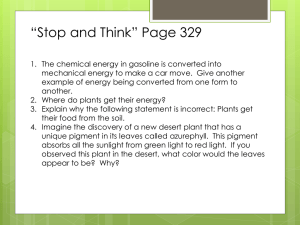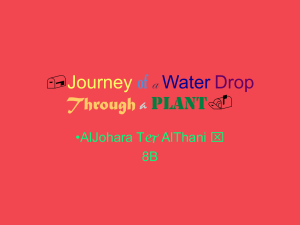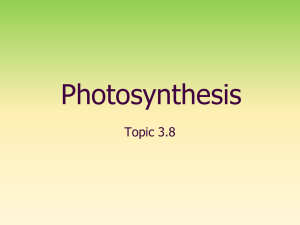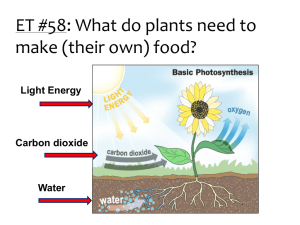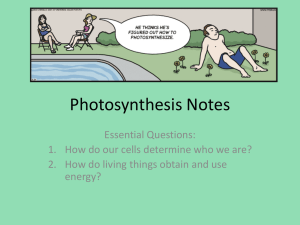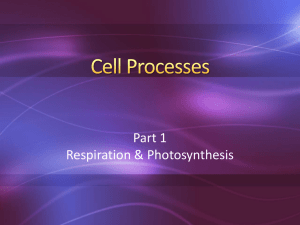Tillandsia
advertisement
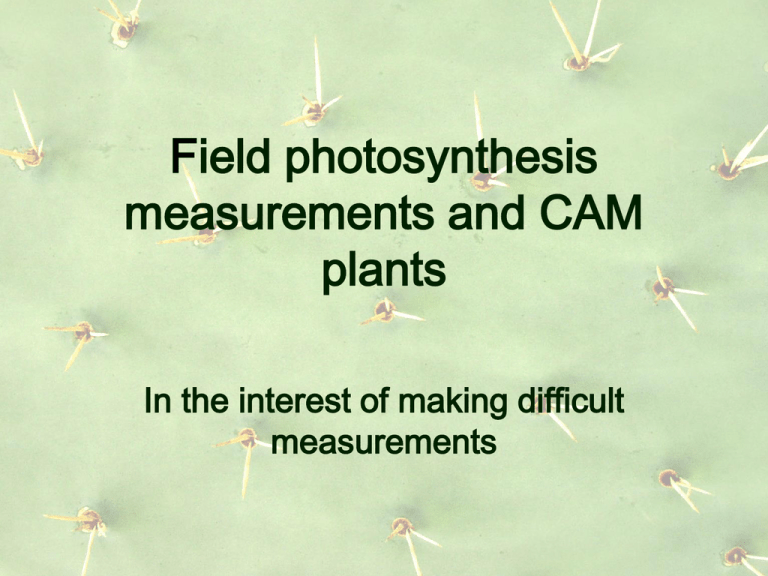
Field photosynthesis measurements and CAM plants In the interest of making difficult measurements What is CAM again? Why so difficult? Field photosynthesis A tale of two Tillandsias What is CAM again? Why so difficult? Field photosynthesis A tale of two Tillandsias Crassulacean Acid Metabolism Water-saving adaptation Approximately 7% of all vascular plants have CAM Evolved independently in over 33 families C3 CO2 uptake (carbon fixation) and photosynthesis (Calvin cycle) is concurrent with light absorption (“light reactions”) = all in the daytime. C4 CO2 uptake and photosynthesis occur in different cells, but both are still concurrent with light absorption CAM CO2 uptake and photosynthesis occur in the same cell, separated temporally; CO2 uptake occurs at night and photosynthesis during the day. PEP Carboxylase Rubisco CAM cycle Typical Las plantas CAM, como Agave tequilana, Presentan una mayor actividad durante la noche Pineapple Ananas comosus Opuntia ficus-indica Epiphytic Acmea Epiphytic Tillandsia Terrestrial Acmea Many orchids A CAM orchid with no stems or leaves… just photosynthetic roots. Opuntia species Clusia species What is CAM again? Why so difficult? Field photosynthesis A tale of two Tillandsias Field photosynthesis Gas exchange Acid accumulation Biomass production Field photosynthesis Gas exchange Field photosynthesis Gas exchange Field photosynthesis Acid accumulation Field photosynthesis Acid accumulation: dawn - dusk 1. Freeze tissue samples. 2. Grind or boil for 5 min. 3. Titrate with 0.01N NaOH to pH7.0. 4. Each 0.5 mol protons is equal 1 mol CO2. Field photosynthesis Biomass production Most productive CAM plants: Agave salmiana: 42 tons hectar-1 year-1 Opuntia ficus-indica: 47-50 C3 crop: Beta vulgaris: 30-34 C3 tree: Cryptomeria japonica: 44 C4 crop: Saccharum officinarum: 50-67 Productivity can be high for tended CAM plants. What is CAM again? Why so difficult? Field photosynthesis A tale of two Tillandsias Why so difficult? Physical problems Why so difficult? Physiological problems Why so difficult? Physiological problems dark day decarboxylation is low Why so difficult? Physiological problems dawn minus dusk acid is affected by previous day dark day decarboxylation is low Why so difficult? 24-hour gas exchange! Difficult to repeatedly seal against surfaces, leaks are common. With cuvettes always sealed against plant surfaces, 24-h gas exchange structures become more apparent. What is CAM again? Why so difficult? Field photosynthesis A tale of two Tillandsias Tillandsia elongata Tillandsia brachycaulos Tillandsia brachycaulos – succulent leaves Tillandsia elongata – tank forming Vertical Stratification results in different light regimes. T. elongata is more exposed than T. brachycaulos. Both species tend to accumulate similar photodamage when they occur in similar light environments in the field. Plants taken from the field are transferred to five shade treatments near the laboratory . Both species saturate at low light. Tillandsia brachycaulos seems to suffer some photoinhibition at moderate light levels. The portable gas exchange system is adapted to measure 24-hour, whole-plant gas exchange in the lab. Measurements are made automatically every 10 minutes. NO 24-h gas exchange in the field. T. elongata has higher rates per kg fresh mass than T. brachycaulos under similar conditions. During drought, T. elongata dropped to a daily negative carbon gain after 8 days; T. brachycaulos after 28 days. Plants were re-watered at arrows and gas exchange recovered quickly for both species. C3 gas exchange disappeared quickly. T. elongata had a lower drought tolerance compared to T. brachycaulos, even though it is in more exposed locations. Gas exchange during rewetting after drought was similar: T. elongata had a higher gas exchange rate after 1 day than T. brachycaulos. Still no C3 photosynthesis after 3 days rewetting. Conclusions: Tillandsia elongata is a “drought avoider” and occurs in more exposed locations to take advantage of direct rainfall and dew formation (a common occurrence even in the dry season). Tillandsia brachycaulos is a “drought tolerator” and relies on leaf succulence to maintain gas exchange during drought. Differences in drought strategies, rather than photoprotection probably affect the vertical locations of each species in the canopy.

